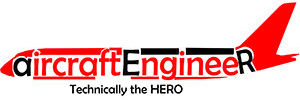how does an Aircraft fly? That is an interesting question.?
An flying aircraft is subject to four forces.
Weight which pointing towards the center of gravity.
thrust – a force move the aircraft forward acts the direction of flight.
drag – force that oppose the aircraft’s movement through the air.
and LIFT
lift is the force acts pointing towards the sky or upwards opposing the gravity. For an Aircraft to fly its lift must be more than its weight. Most lift of an aircraft generated by the wings. Where the Fuselage and other structures too contribute to total lift. So the how does the wings generate lift?
Wing is a three dimensional Airfoil. Airfoil is an shape of an wing, to be precise cross sectional view of a wing.
generation of lift
The unique feature of an aircraft as compared with all other types of transportation vehicles is its ability to lift into the air. The force of gravity acts on all bodies on or near the surface of the earth and results in the weight of an object. In order for an aircraft to fly, a force must be created that will overcome the force of gravity. This force is called lift.
The Physics of Lift
Some basic principles of physics can be used to understand how lift is created. The physical forces that support an aircraft in flight may be explained principally by two basic laws of physics: Newton’s third law of motion and Bernoulli’s principle.
As a wing moves through the air, the airflow will be divided to flow over and under the wing, as is shown in Figure 19 When there is a positive angle between the wing and the direction of the air stream, the air is forced to change direction. If the wing is tilted upward against the air stream, the air flowing under the wing is forced downward. The wing therefore applies a downward force to the air, and the air applies an equal and opposite upward force to the wing.
This is the creation of lift and can be explained by Newton’s third law of motion, which states: For every action there is an equal and opposite reaction. The angle through which an air stream is deflected by any lifting surface is called the downwash angle. It is especially important when control surfaces are studied, because they are normally placed to the rear of the wings where they are influenced by the downward-deflected airstreams known as the downwash.
